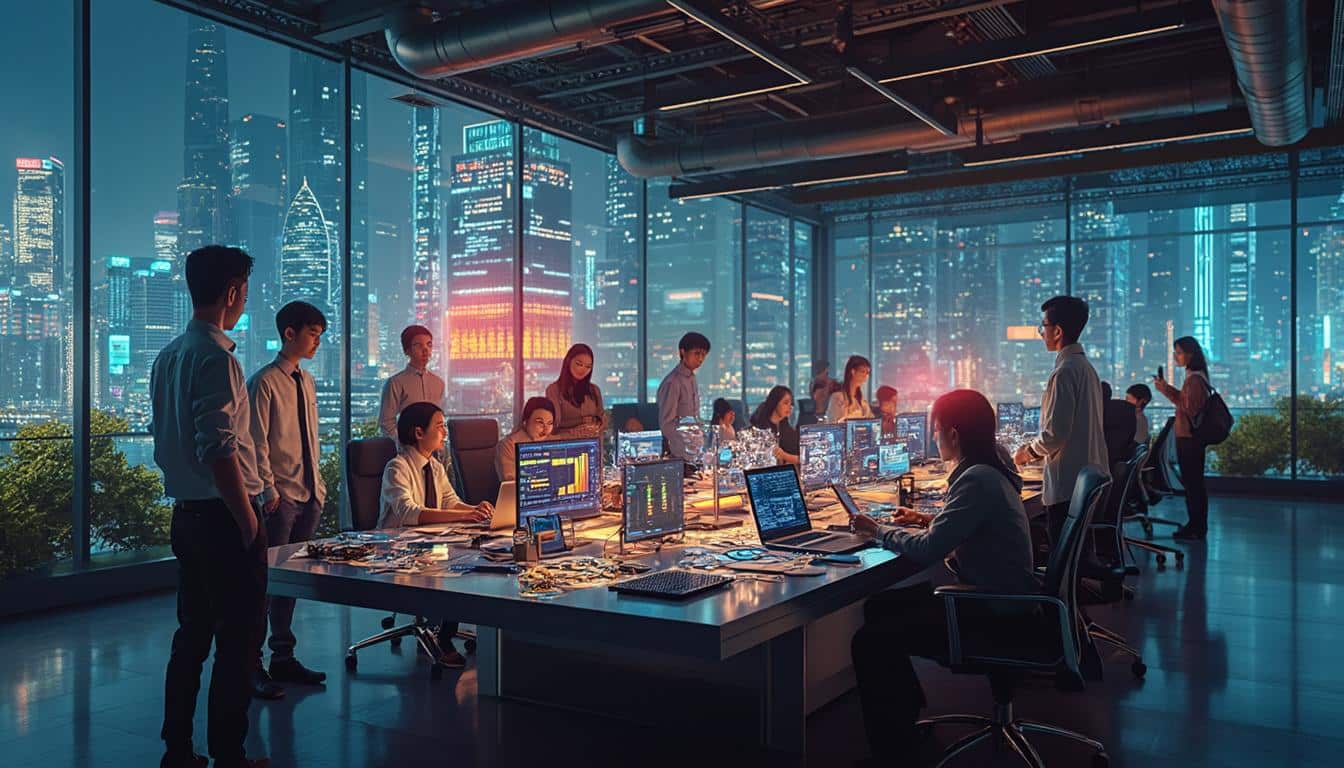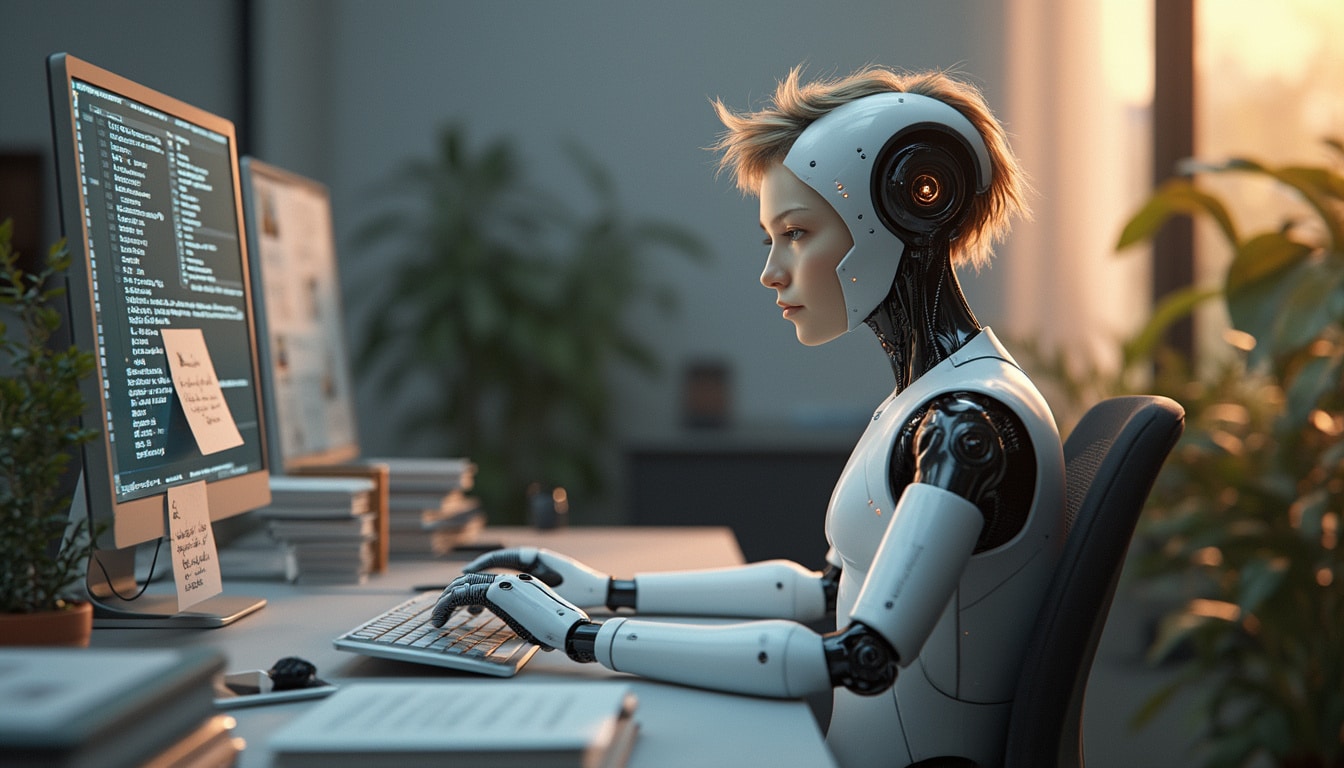Imagine a hospital where every surgery is orchestrated by artificial intelligence. China is pioneering this futuristic vision by planning to establish a 100% AI-driven hospital. Elon Musk predicts that within a few years, robotic surgeons will surpass their human counterparts.
As these advancements stir excitement, social media users remain skeptical about the feasibility of fully autonomous surgical robots. Critics question the future roles of human surgeons and the potential job displacement by machines. Current robotic systems require human oversight, debunking claims that AI can independently perform complex medical procedures. Despite the promises, experts caution that widespread adoption of AI in surgery faces significant challenges.

In a bold statement that has sent ripples through the medical community, Elon Musk recently predicted the eventual replacement of human surgeons with robots. This claim has ignited a heated debate among healthcare professionals and the public alike, questioning the future of surgical practice and the role of artificial intelligence in medicine.
Table of contents
ToggleHow credible are Musk’s predictions about robotic surgeons?
Elon Musk, renowned for his ventures in technology and innovation, has been vocal about the potential of robotic surgery. He referenced Neuralink’s advancements, highlighting a case where an automated system successfully implanted electrodes in the human brain—a procedure demanding extraordinary precision and speed. Musk argues that such robotic capabilities could surpass human surgeons, promising enhanced performance and reduced error rates.
However, Musk’s optimism is met with skepticism. While the progress in AI-driven surgery is undeniable, many experts caution against underestimating the complexities of medical procedures. Robotics in surgery currently serve as powerful tools that augment a surgeon’s skills rather than replace them entirely.
What are the main concerns from the medical community?
The response from surgeons and medical professionals has been swift and critical. A seasoned surgeon specializing in robotic-assisted surgery stated, “This is nothing but deception. Robots don’t perform surgeries autonomously. Surgeons control the robots via consoles, using them as tools to refine and amplify their movements.” This sentiment echoes among many in the field, emphasizing that human expertise and decision-making remain irreplaceable.
Further concerns revolve around the ethical and practical implications of replacing human surgeons with machines. Questions arise about accountability in case of errors, the loss of the human touch in patient care, and the adaptability of AI in handling the nuances of individual cases. As one user on social media aptly put it, “What will happen to all the surgeons? How do you plan to replace these jobs with robots?”
Are there any advancements that support Musk’s vision?
Despite the skepticism, there are notable strides in robotic surgery that hint at a future where machines play a more significant role. Companies like Medtronic have tested their Hugo robot in over 137 surgeries, including prostate, kidney, and bladder surgeries, with results exceeding expectations. The complication rates were impressively low, demonstrating the potential for robotic precision in surgical procedures.
Moreover, innovations in AI and machine learning continue to enhance the capabilities of surgical robots. From improving precision and speed to enabling minimally invasive techniques, the integration of AI in surgery holds promise for more efficient and safer operations.
For more on groundbreaking innovations in surgery, explore this article on presbyopia surgery breakthroughs in Nantes.
What are the counterarguments against the rise of robotic surgeons?
Many experts argue that the current state of robotic surgery supports the view that these machines are tools rather than replacements. A recent discussion on social media highlighted that all existing surgical robots require human oversight, making the notion of fully autonomous robotic surgeons unrealistic at this stage.
Another significant point is the individuality of patients. Each patient presents unique challenges that demand personalized approaches—something that robots, despite their advanced algorithms, may struggle to replicate. Critics also point out that the emotional and psychological aspects of patient care cannot be understated, areas where human surgeons excel.
What is the role of Neuralink in the future of surgery?
Neuralink, another of Musk’s ambitious projects, aims to merge brain-machine interfaces with medical technology. The company has made strides in developing implants that can restore motor functions in patients with spinal cord injuries. While initial results are promising, with a patient regaining motor skills, regulatory hurdles have slowed the progress, as evidenced by the FDA’s rejection of their clinical trial applications in 2023.
Despite setbacks, Musk remains undeterred, envisioning a future where neural implants could be widely used in medical procedures. These implants could facilitate faster surgeries and treat a range of conditions, from autism spectrum disorders to depression and obesity-related issues, by integrating directly with patient neurology.
For insights into how technology is transforming other medical fields, check out this piece on technological innovations in cardiology.
How are patients reacting to the integration of robotic technology in surgeries?
Patient responses to robotic-assisted surgeries are generally positive, especially when outcomes are favorable. Studies have shown that robotic surgeries often result in shorter hospital stays, reduced blood loss, and quicker recovery times. However, the acceptance of fully autonomous robotic surgeons remains low, primarily due to trust and safety concerns.
Surgeons report that while robotic assistance enhances their capabilities, patients still value the expertise and reassurance provided by human doctors. The human element in healthcare—empathy, communication, and ethical considerations—remains crucial for patient satisfaction and trust.
What does the future hold for surgeons and robotic technology?
While Elon Musk’s prediction may be hyperbolic, the trajectory of robotic technology in surgery suggests a future of increased collaboration between humans and machines. Surgeons equipped with advanced robotic tools can perform more precise and less invasive procedures, potentially revolutionizing the field of medicine.
Long-term, the integration of AI in surgery could lead to enhancements in training, allowing surgeons to refine their skills with the aid of simulations and real-time data analytics. Additionally, interdisciplinary collaborations between tech companies and medical institutions may yield innovative solutions that blend human ingenuity with machine efficiency.
For more groundbreaking tech in the medical field, visit The Passthrough and its impact on VR experiences or Google’s Android XR glasses live demo.
What are the ethical implications of replacing surgeons with robots?
The ethical debate surrounding the replacement of human surgeons with robots is multifaceted. Key concerns include accountability in the event of surgical errors, the potential loss of jobs for medical professionals, and the depersonalization of patient care. Moreover, there is the question of equitable access to advanced robotic technologies, which may be cost-prohibitive for some healthcare systems.
Advocates for robotic surgery argue that ethics can be maintained by establishing stringent guidelines and oversight mechanisms. Ensuring that human oversight remains a core component of surgical procedures is essential to address accountability and maintain trust in the healthcare system.
For information on how ethical considerations are being addressed in other technological advancements, see Lépine Competition’s hearing aid headset for the hearing impaired.
Can AI truly understand the complexities of human biology?
One of the fundamental challenges in replacing surgeons with AI lies in the intricate understanding of human biology and pathology. While AI can process vast amounts of data and recognize patterns, the ability to interpret and respond to unexpected complications during surgery requires a level of intuition and adaptability that current AI lacks. Human surgeons bring years of training, experience, and the ability to make split-second decisions based on a holistic understanding of each unique case.
Furthermore, the interconnectedness of bodily systems means that a change in one area can significantly impact another, requiring surgeons to assess and respond to these dynamics seamlessly. AI-driven systems, though advanced, are not yet capable of fully replicating this level of comprehensive understanding and responsiveness.
For a deeper dive into how AI interacts with human biology, explore innovations in hearing aid technology and their implications.
What are the economic implications of a shift towards robotic surgeons?
Transitioning to a future dominated by robotic surgeons could have significant economic impacts on the healthcare industry. Initially, the investment required for acquiring and maintaining robotic systems is substantial, potentially widening the gap between well-funded medical institutions and those with limited resources. Additionally, the reduction in demand for human surgeons could lead to job displacement and necessitate retraining programs for affected medical professionals.
Conversely, robotic surgeries can lead to cost savings in the long run by reducing hospital stays, minimizing complications, and increasing the efficiency of surgical procedures. This could make advanced medical care more accessible and affordable, provided the initial investment hurdles are overcome.
To understand more about the economic aspects of medical innovations, read about Google’s XR glasses and their market implications.
How does public perception influence the adoption of robotic surgery?
Public perception plays a crucial role in the adoption of robotic surgery. Confidence in medical technology is essential for patients to accept and seek out these advanced procedures. While many view robotic surgery as a sign of progress, others harbor fears about the loss of human touch and the reliability of machines in critical medical situations.
Educational initiatives and transparent communication from healthcare providers can help bridge the gap between innovation and public trust. Demonstrating the benefits, such as increased precision and reduced recovery times, alongside clear information about the continued role of human surgeons, can foster a more positive reception.
For examples of successful technology adoption in healthcare, see The Passthrough’s impact on VR in medicine.
What advancements are needed for AI to replace surgeons fully?
For AI to potentially replace human surgeons, several key advancements are necessary. First, autonomous decision-making capabilities must be significantly enhanced to handle the unpredictability of surgical environments. This includes developing AI that can adapt to unforeseen complications and make ethical decisions on the fly.
Second, improvements in machine learning algorithms are required to enable more nuanced understanding and manipulation of human tissues. The tactile feedback and sensory integration that human surgeons rely on are challenging to replicate with current technology.
Lastly, robust regulatory frameworks must be established to ensure the safety, efficacy, and ethical use of robotic surgeons. Comprehensive testing, certification, and continuous monitoring are essential to gain the trust of both the medical community and the public.
For insights into the future of AI in medicine, visit Cardiology’s technological innovations.
Are there any successful integrations of AI and human surgeons today?
Currently, the most successful integrations of AI in surgery involve collaborative efforts where AI systems and human surgeons work together. AI-driven tools assist in planning and executing surgeries by providing real-time data analysis, enhancing precision, and reducing the risk of human error. These tools include advanced imaging systems, predictive analytics, and robotic arms that respond to the surgeon’s commands.
These collaborative systems have led to improved surgical outcomes, shorter operation times, and enhanced patient safety. However, the surgeon remains at the helm, making critical decisions and adapting to the unique needs of each patient. This synergy between human expertise and machine precision exemplifies the potential of AI to revolutionize surgery without eliminating the role of human doctors.
Learn more about how AI and humans are working together in presbyopia surgery innovations in Nantes.
What are the potential benefits of robotic surgery for patients?
Robotic surgery offers numerous benefits for patients, contributing to better overall outcomes and enhanced surgical experiences. Some of the key advantages include:
- Precision: Robotic systems can perform intricate procedures with higher accuracy than human hands, reducing the margin of error.
- Minimally invasive: Smaller incisions result in less trauma to the body, leading to quicker recovery times and reduced scarring.
- Reduced blood loss: Enhanced precision minimizes bleeding during surgery, lowering the risk of complications.
- Shorter hospital stays: Faster recovery times translate to shorter hospitalizations and quicker return to daily activities.
- Consistent performance: Robots maintain a steady hand, ensuring consistent execution of surgical tasks.
These benefits make robotic surgery an attractive option for both patients and healthcare providers, driving its increasing adoption across various medical fields.
For more on the patient benefits of advanced medical technologies, explore hearing aid headset innovations.
How do surgeons train to use robotic systems?
Training surgeons to effectively use robotic systems involves comprehensive education and hands-on experience. Medical institutions offer specialized programs that include:
- Theoretical training: Understanding the mechanics and functionalities of robotic systems through coursework and simulations.
- Practical workshops: Gaining hands-on experience with robotic equipment under the supervision of experienced trainers.
- Certification: Completing accredited training programs that certify surgeons as proficient in robotic-assisted procedures.
- Continuous education: Updating skills and knowledge as robotic technology evolves and new systems are introduced.
These training programs ensure that surgeons are well-prepared to integrate robotic assistance into their practice, maximizing the benefits for patients while maintaining high standards of care.
For more on training and technology in healthcare, visit Google’s Android XR glasses demo.
What is the global perspective on robotic surgery?
Globally, the adoption of robotic surgery varies based on healthcare infrastructure, economic factors, and regulatory environments. Countries with advanced medical systems, such as the United States, Germany, and Japan, have been at the forefront of integrating robotic technologies into their healthcare practices.
In China, efforts to establish hospitals fully managed by AI highlight the country’s commitment to technological innovation in healthcare. These initiatives aim to streamline operations, enhance precision, and reduce costs, positioning China as a leader in the next wave of medical advancements.
However, disparities exist in access to robotic surgery. Developing countries may face challenges in acquiring and maintaining expensive robotic systems, potentially widening the gap in healthcare quality between different regions.
To understand the global impact of medical innovations, check out how VR is transforming global healthcare.
What does the future hold for the relationship between AI and human surgeons?
The future of AI and human surgeons is likely to be characterized by increased collaboration and symbiosis. Rather than replacing human surgeons, AI is expected to augment their capabilities, providing tools that enhance precision, efficiency, and outcomes. This partnership can lead to groundbreaking advancements in surgical techniques and patient care.
As AI continues to evolve, the potential for even more sophisticated integrations emerges. Surgeons may rely on AI for data-driven insights, predictive analytics, and real-time monitoring during surgeries, enabling them to make more informed decisions and tailor treatments to individual patient needs.
Ultimately, the relationship between AI and human surgeons will be defined by mutual enhancement, where technology empowers medical professionals to deliver superior care while maintaining the essential human elements of empathy and ethical decision-making.
For more on the evolving relationship between technology and healthcare, visit Cardiology’s role in technological innovation.














